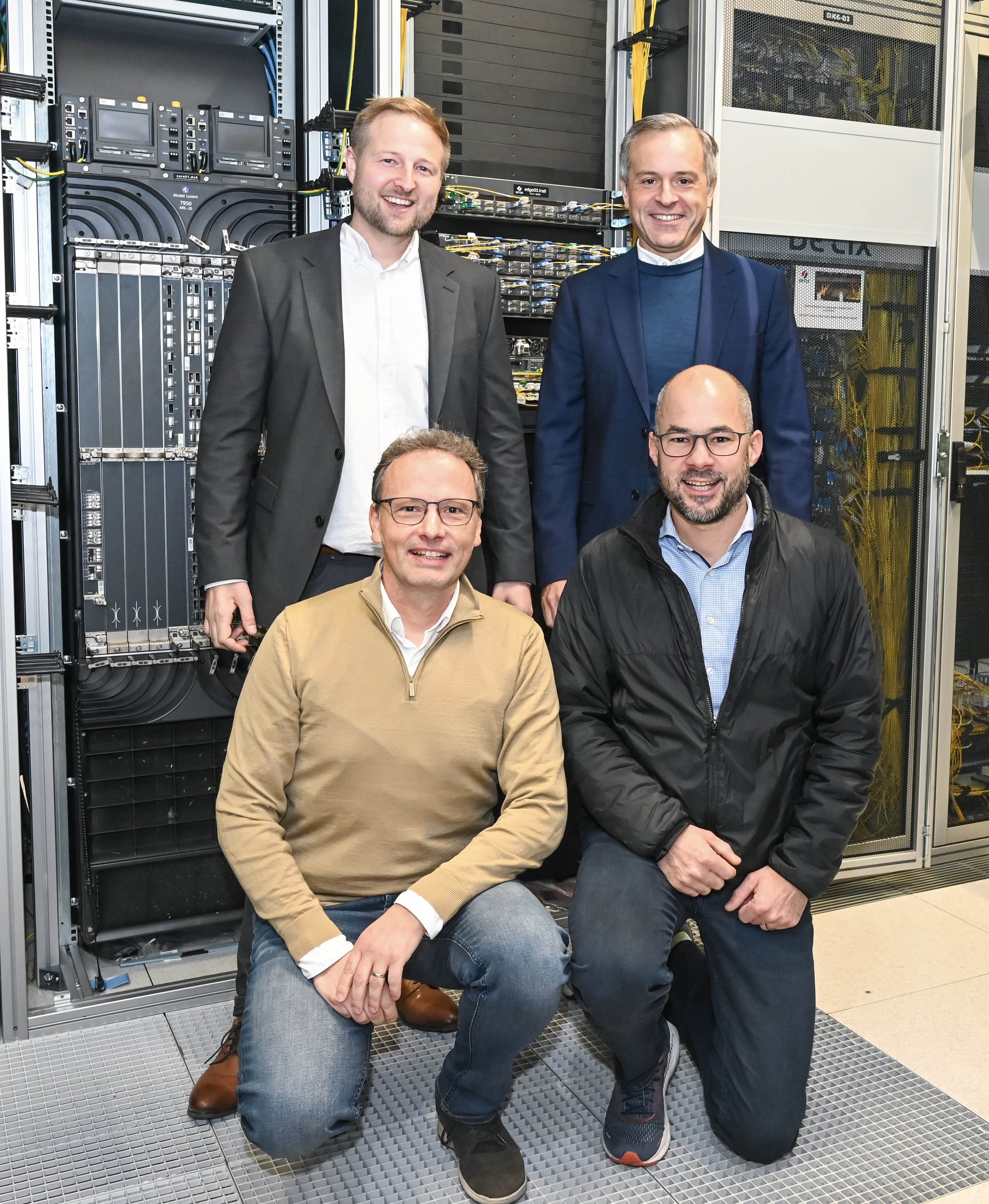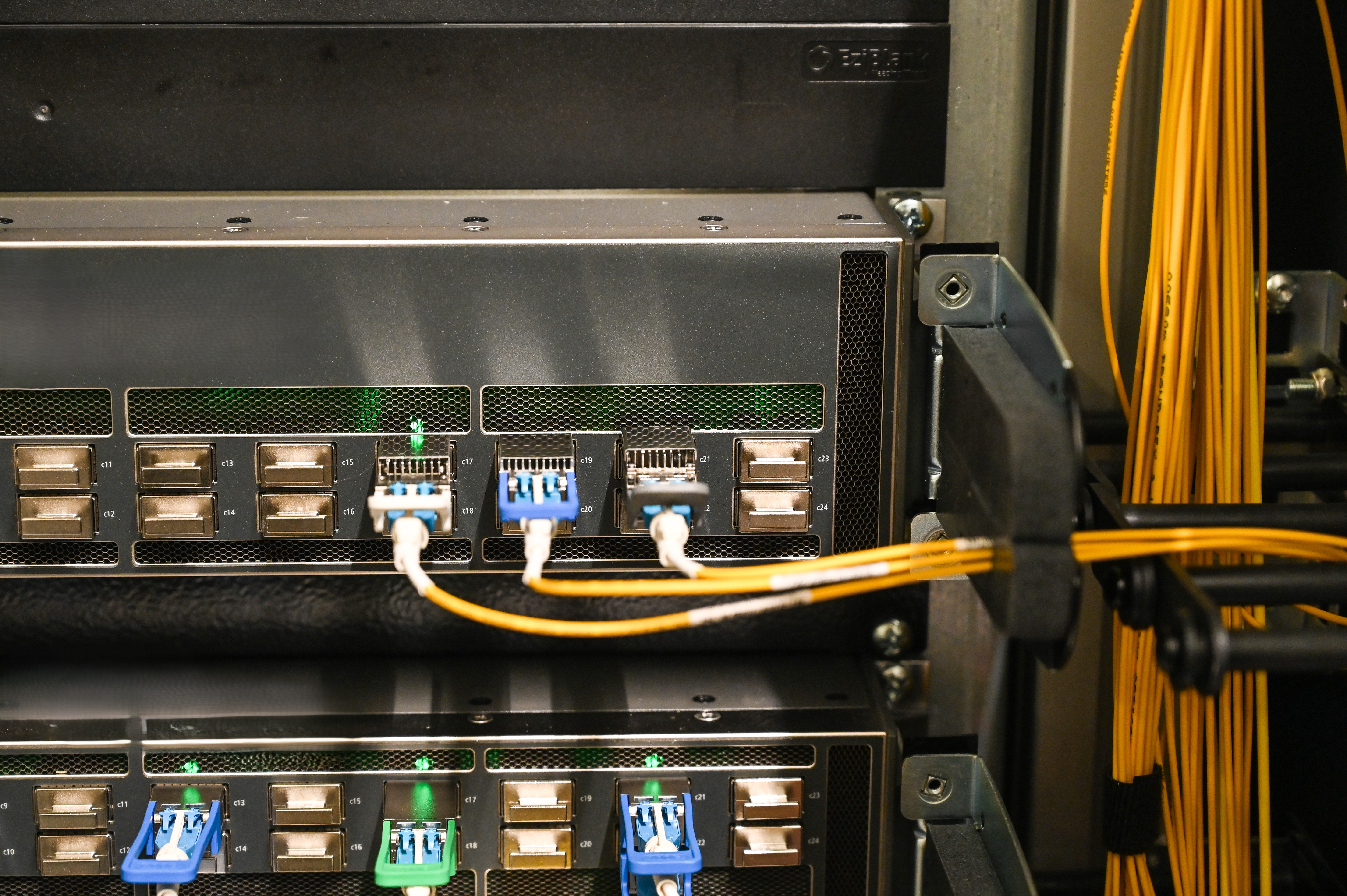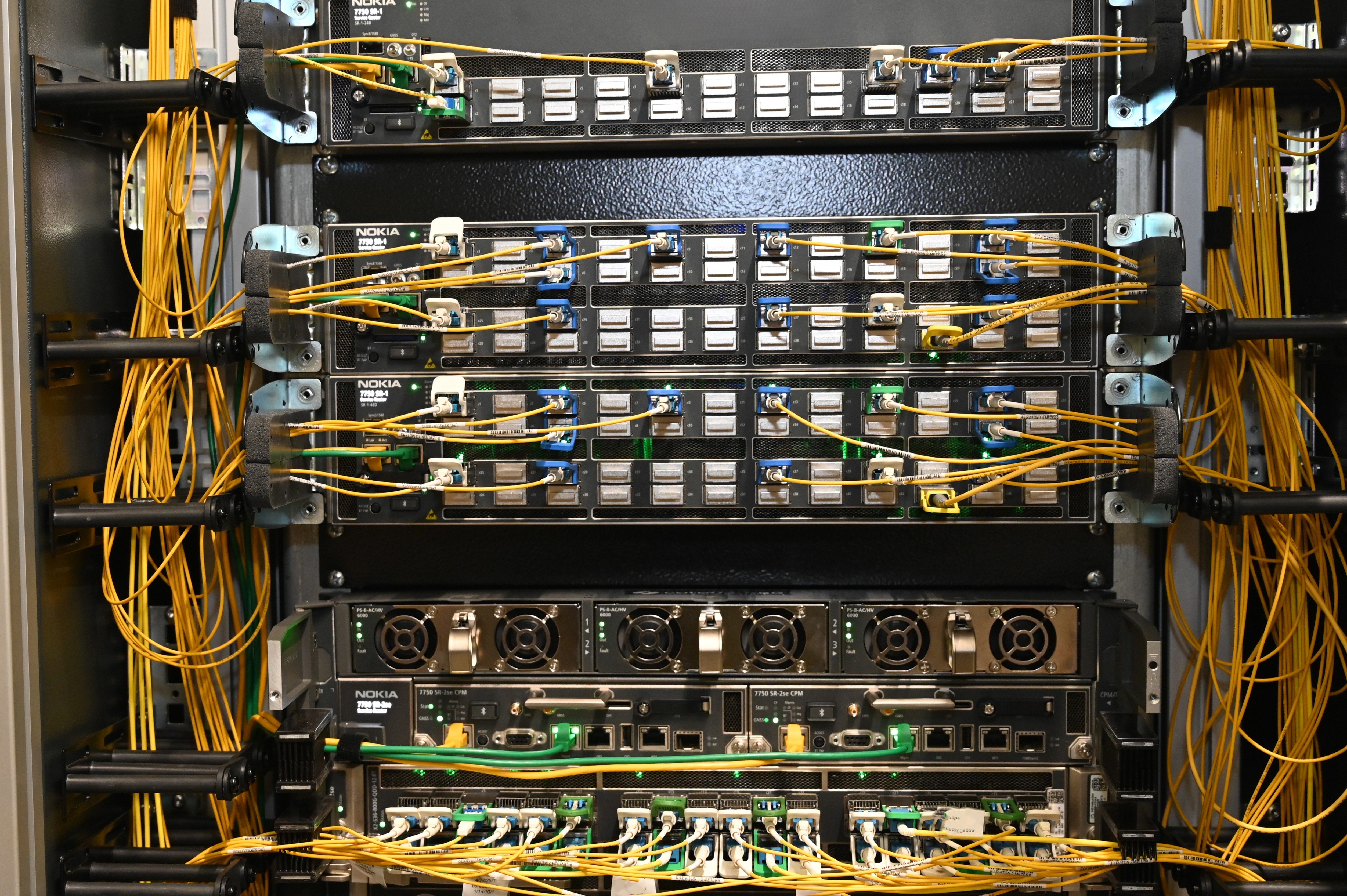- Deutsche Glasfaser using 800 gigabit Internet Exchange port: New standard for network infrastructure
- First DE-CIX connection using 800G ZR+ single-lambda optics from Nokia
- Platform and processes at DE-CIX automated from end to end
Frankfurt (Germany). DE-CIX is taking the Deutsche Glasfaser Group's connectivity to the next technological level. As a pioneer in fiber optic expansion, the company is the first customer to be connected via an 800 Gigabit Ethernet (GE) port to Europe's largest Internet Exchange (IX), DE-CIX Frankfurt. This is a first not only for the ecosystem of the world's leading IX operator, but for the global interconnection industry as a whole: DE-CIX is the first IX operator worldwide to connect a company using 800 GE technology. DE-CIX was the first provider in the world to introduce this access technology at DE-CIX Frankfurt back in October 2022. At the heart of the system are Nokia's new 800G-ZR+ single-lambda optics, which transmit 800 gigabits per second on a single wavelength, plugged into Nokia’s 800GE capable IP routers. The 800G-ZR+ optics mark the next leap forward in network technology: double the data performance, higher efficiency, lower energy consumption.
New optics simplify data traffic
More data in less space: Instead of distributing data across multiple wavelengths, all traffic runs on a single wavelength with the new 800G-ZR+ optics. And whereas in older systems with multiple wavelengths bits and bytes are aggregated again after transmission, this step is now completely eliminated. Having all packets flow over a single wavelength and a single optical module saves hardware, space, cabling, and power, and optimizes the data flow. Customers also save costs because a single cross connect is sufficient to connect to DE-CIX. With their standardized design, which can be integrated directly into routers, the new optical modules simplify operation and make networks future-proof and scalable.
Router, optics, and port provisioned fully automatically
“We are delighted to be supplying Deutsche Glasfaser – as our very first customer – with the new access technology,” says Dr. Thomas King, CTO at DE-CIX. “To connect the telecommunications company, we installed high-performance 800 GE capable routers from Nokia. The provisioning of routers, optics, and ports was fully automated on the software and configuration side – and took just a few hours.” “In recent years, we have consistently automated and standardized our processes and platform,” says Tim Kleefass, Vice President Interconnection Platform at DE-CIX. “With end-to-end automation, we are creating the basis for an efficient and scalable Interconnection as a Service platform in the global ecosystem.”
Deutsche Glasfaser with 800-GE port: New standard for network infrastructure
Deutsche Glasfaser is considered one of the leading fiber optic providers in Germany and is driving the nationwide expansion of fiber to the home (FTTH) connections, particularly in rural and suburban regions. “With the 800 GE port at DE-CIX Frankfurt, we are setting a new standard for the future viability of our network infrastructure,” says Pascal Koster, Chief Operating Officer (COO) at Deutsche Glasfaser. “As a result, we now have in total more than 1.6 Terabits per second of capacity at Europe’s largest Internet Exchange. In this way, we are creating the foundation for the Internet of tomorrow – with more speed, stability, and greater sustainability for millions of users.”
DE-CIX and Nokia have been partners in the field of network technology for more than ten years. Together, the two companies are driving innovation in routing and optical transmission solutions and regularly set new benchmarks for performance and automation at DE-CIX locations worldwide. “The collaboration with DE-CIX is particularly important to us because it enables us to deploy our optical innovations directly in one of the most advanced interconnection environments in the world,” says Matthieu Bourguignon, Senior Vice President Europe at Nokia Networks Infrastructure. “With 800G-ZR+ single-lambda optics, we are jointly setting new standards for efficient, scalable, and automatable network infrastructures and demonstrating how technological advances are shaping the future of global data exchange.”
Data traffic drives demand for bandwidth
From streaming to video conferencing to gaming, the world's demand for more bandwidth has been growing for years, and with it the volume of bits and bytes moving through the world's networks. Global data traffic at the DE-CIX Internet Exchanges reached a new record in 2024 at over 68 exabytes – 15 percent more than in 2023 and more than twice as much as in 2020. DE-CIX Frankfurt alone recorded a data flow of 45 exabytes, which corresponds to an increase of 13 percent compared to 2023.




